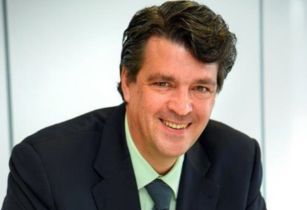At the GITEX this year, Technical Review caught up with Nokia’s Roque Lozano, SVP for network infrastructure, MEA. He spoke about the company’s plans for the region. Read on:
Technical Review Middle East (TRME): What are some of the main trends you are witnessing in the region?
Roque Lozano (RL): The three main trends that we at Nokia are seeing are those that have always existed. We have the same KPIs, but their magnitude has grown without a doubt.
Firstly, capacity has increased incredibly. There is a huge demand for capacity. Traffic is booming. For example, we recently deployed projects reaching 20 terabytes of capacity in just one year, when earlier it used to take three to five years to reach that capacity. So there is an acceleration of the traffic even though there are many new links and all of them are getting fulfilled faster and faster.
Another big trend is latency. That is fundamental because it directly impacts the user experience. We all are human, impatient animals. Users typically don’t like to wait even for a few seconds when they’re using any type of applications. Because it’s difficult for a layman to understand the network complexity behind it, we get impatient and we shut down. That latency always has been important, but now it's critical, critical to the point that you can lose business.
The third one is security. Again, this is a common one, but the urgency to implement secure software is getting bigger and bigger. This is because communications are becoming a fundamental tool for all industries, for all government activities, and for all social media channels.
TRME: What are some solutions you are highlighting at GITEX?
RL: We believe that a network is like a chain and the strength of that chain is limited by the weakest segment. So you cannot settle for a very good solution, you have to get a full solution. From the data centres to the cables, they are the backbone of the network, and billions can be destroyed because the Wi Fi is low quality. So we provide the best quality Wi Fi, with the mesh Wi Fi, with the Wi Fi six, Wi Fi seven, the best fibre, and fixed wireless access. These allow you to secure the KPIs, and increase user experience in the access network and in the home network, along with official indoor coverage.
TRME: What opportunities do you have in the MENA region?
RL: There is plenty of opportunity in the region. We are told many times about the digital gap, but at Nokia we see it as a digital opportunity.
Because even in the most developed countries, and in the most sophisticated business district, there are digital gaps. For example, the enterprise cannot connect to the cloud, or the cloud providers cannot connect to them. The sophistication of that connectivity requires a big transformation in today's networks. So that gap is everywhere, and at the same time it is a digital opportunity. And we believe that this network concept cuts across all the segments of the value chain, is the only way to secure the premium connectivity to provide premium services. When I say premium connectivity, I'm not selling something more expensive. It means something that is more secure, portable, driven, and is dedicated.
TRME: What are some challenges you are facing in the industry?
RL: We need to go faster when it comes to adopting new technology. Secondly, the geopolitics of the world has impacted business across industries, and inflation is currently increasing too. But I cannot comment on that as an engineer. What I can say is that the opportunity that digitalisation brings, is the most meaningful for all the sectors including the government sector. We also need to become more sustainable. That is also an opportunity for us because without digital there is no sustainability. And without “green”, there is no sustainability. This means that cities cannot evolve, right? And all of that depends on a very simple thing: the premium connectivity domain and the digital process.






